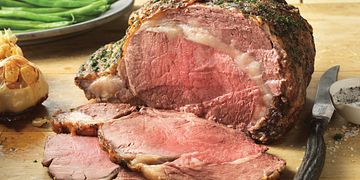Troy and Stacy Hadrick
“Our families have been here for more than 100 years, which is something to be very proud of. We hope that our children are interested in being part of the ranch, so we need to make sure the opportunity still exists for them in the future. We really want people to understand what we’re doing and why we’re doing it, which is why our social media accounts are so important to us.”
South Dakota Family Carries on Ranching Tradition and Embraces the Now
Troy and Stacy Hadrick are the 4th generation to live and work on their family’s ranch in South Dakota. They use their family’s decades’ worth of experience to care for the land and cattle while also embracing the use of new technologies – from solar power, to help them raise more cattle using fewer resources, to smartphones and social media, to enable them to share their story with others who are farther removed from ranch life.
Learn more how they mix 100-year-old ranching traditions with today’s technology.
Facts At A Glance:
107
Years the family has been farming and ranching in South Dakota
80
percent of cattle finished is Certified Angus Beef or better
1.5
thickness in inches is how Troy likes ribeye steaks cut
6
generations have been farming and ranching in the US
5
the number of acres it takes to run a cow/calf pair for the summer in a normal year
Meet Your Rancher:
What is the importance of family ties, past and present, to your ranch?
Troy (TH): I’ve been fortunate to work with family my entire life. I grew up on this ranch working with my grandfather, father, uncle and cousins. Now my cousins and I have taken over as the 4th generation in our family to farm and ranch at this location. When it comes to making good decisions about how we care for the land and cattle, we have generations of knowledge and experience to fall back on.
Every fall we move cattle past a little spot where there are a handful of trees growing out in a pasture. That’s the spot where my great-great grandparents settled when they moved to South Dakota a century ago. I’m proud to continue that tradition and even more proud to be raising the next generation of our family on our ranch.
What makes your ranch unique – geographical, environmental, type of cattle, etc.?
TH: We raise Angus cattle (the black ones!) on the prairies of north central South Dakota. We have a good amount of annual precipitation, but a significant portion of that will come as snow. We experience a very wide range in temperatures during the year. Winter low temps can drop down to -30 with -60 wind chills, but our summer high temperatures can climb up to 110 degrees or more. These challenging environmental conditions can be tough so it’s important to have the kind of cattle that can thrive in this type of environment (which the Angus do!).
The past couple of years have been fairly dry for us so we’ve had to start using some solar-powered wells to assist in watering cattle. They’ve been a great solution for us to better utilize our pastures and provide clean water for our cattle.
What are some of the biggest challenges for managing your ranch?
TH: Because of our unique environment, managing the food our cattle eat is something that I am constantly monitoring. With our harsh winters, it imperative that we have plenty of feed until green grass grows again. When summer comes, we spread our cattle out over several different pastures, so we’re on the move with equipment all the time!
What is a “typical” day like for you?
TH: The only constant in a typical day for me is dealing with the cattle in my care, but what I’m doing with them varies a lot throughout the year based on the season. During the winter months, I spend my time feeding cattle and making sure they have fresh water. Come spring we will start calving, which involves round-the-clock care. In the summer months, the cattle are out on green grass, so we spend a lot of time driving to their locations and checking on them.
Now this may sound funny, but something else that’s always involved in my “typical” day is my smartphone. It’s a really important tool for not only my business, but also for sharing a little bit of what I do on social media! I really want to share what we do and let people to see our way of life.
How do you prepare your favorite cut of beef?
TH: I especially enjoy a “Cowboy-Cut” Ribeye Steak. I will grill them over low heat until they’re medium rare to medium. I like to put just a dash of seasoned salt on them and that’s it.
If someone wants to follow your ranch activities on social media, where can they find you?
TH: I always enjoy using social media to let people get a feel for what we do every day on the ranch. You can find us on Facebook and Twitter @TroyHadrick or @StacyHadrick
Hadrick Family Ranch

Faulkton, SD
Cow/Calf Ranch
Cows are bred and calves are born and raised every year on cow-calf farms and ranches, spending time grazing on grass pastures within sight of their mothers.
Backgrounding
Between 6-12 months of age, cattle spend time at stocker and backgrounder farms and ranches where they graze on a variety of pastures. Here they gain weight and convert forage and grass into lean protein.
Feedyard
Cattle spend their final 4-6 months at a feedyard being fed a scientifically-balanced diet and receiving daily care.







